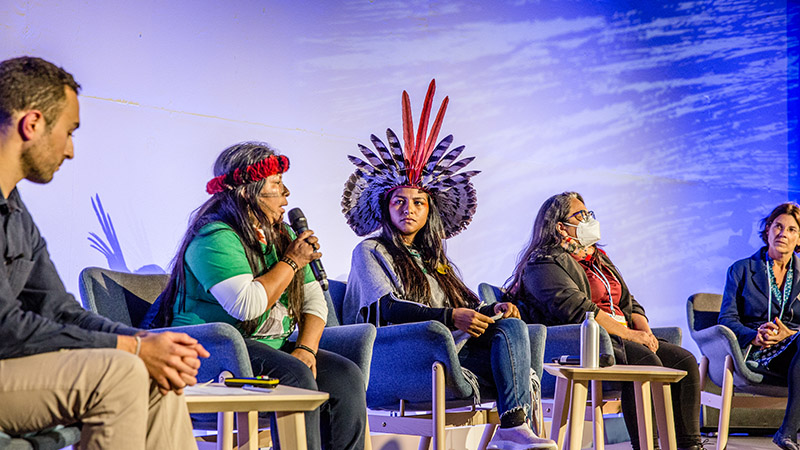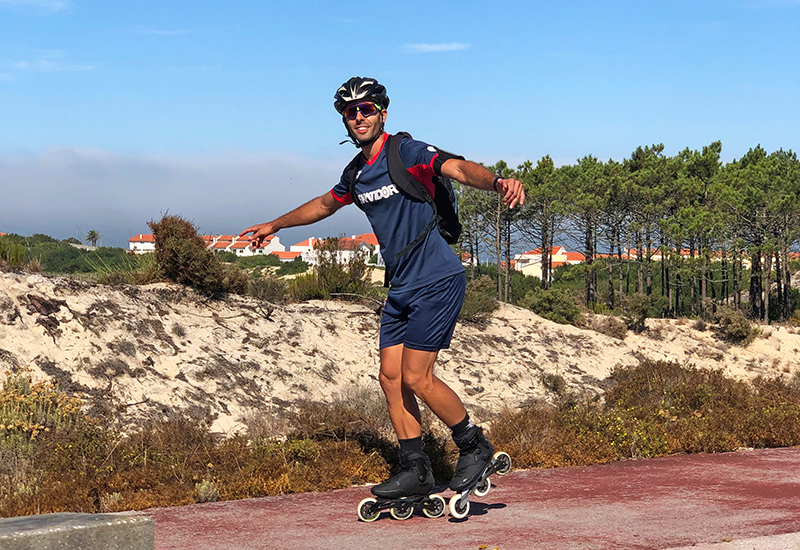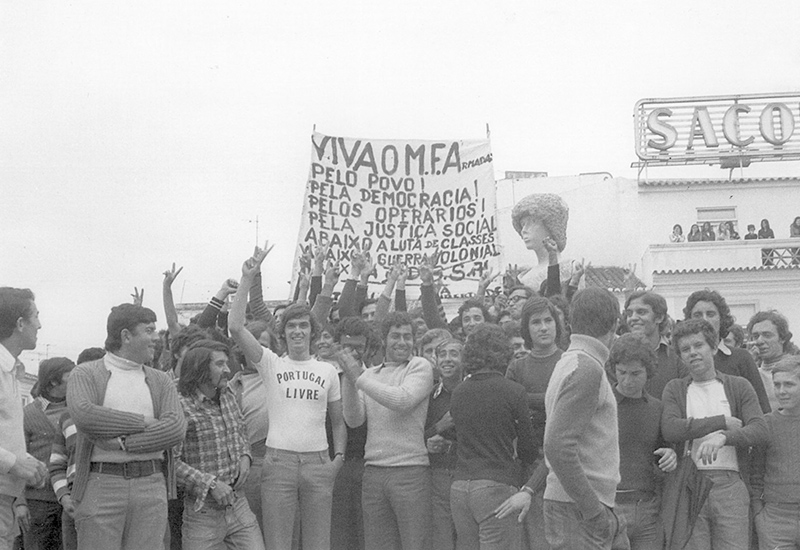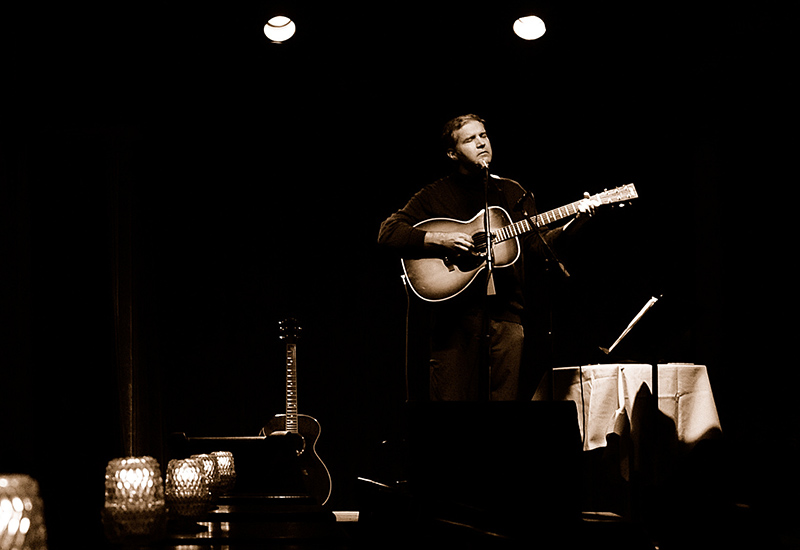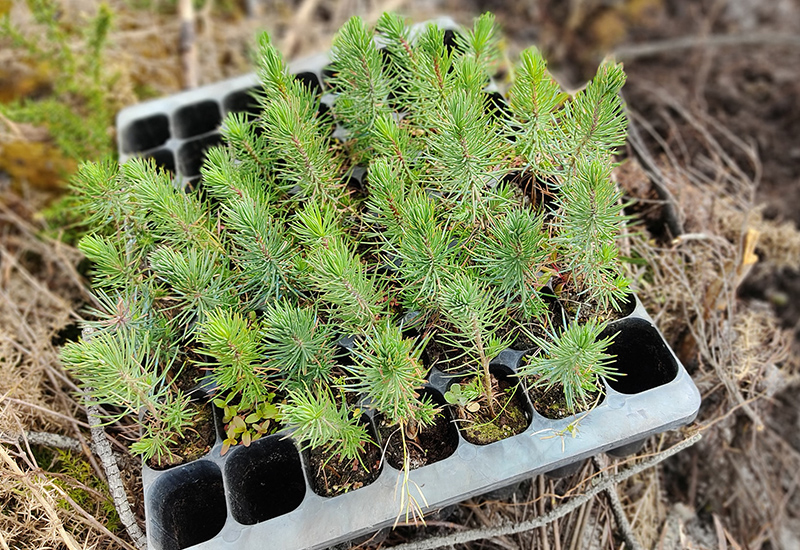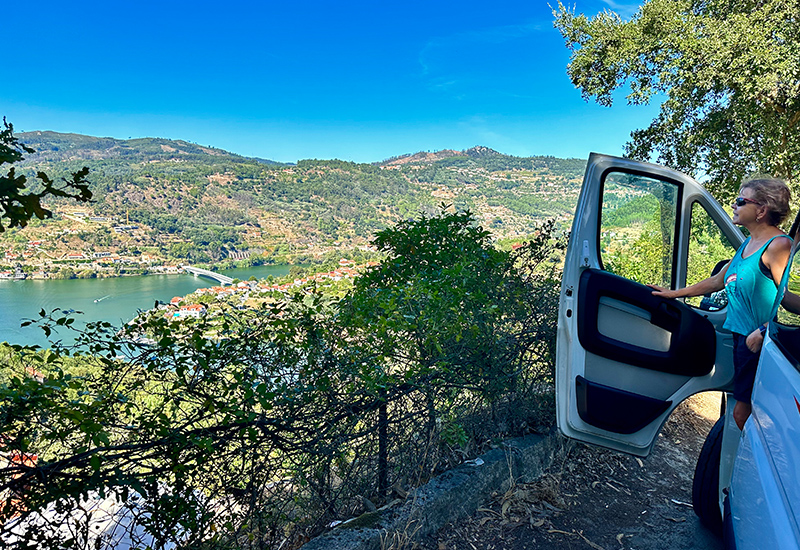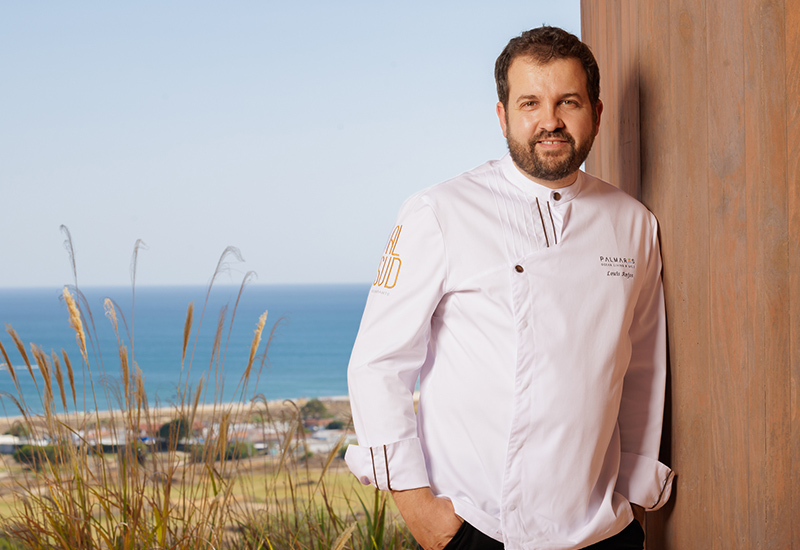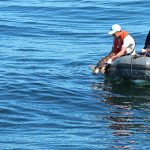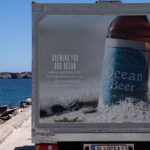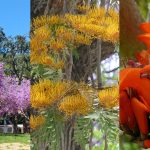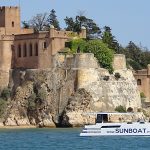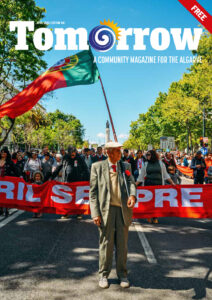Leonardo DiCaprio’s Private Meeting with Juma, the Rainforest’s Woman Warrior
Aljezur resident and renowned Brazilian photographer Leticia Valverdes shares the surprising events and touching moments she witnessed behind the scenes in Glasgow.
Described as the “last, best hope” to save our planet, the COP conference in Glasgow broadcast heads of state and industry giants making lofty promises, grandiose commitments and ambitious plans. Massive screens depicted burning forests, shrinking icebergs and rising sea levels. But, behind the televised drama of the powerful and famous, the backstage connections are where the real progress begins.
For Aljezur resident and renowned Brazilian photographer Leticia Valverdes, the picture was a mixed tableau of grief and hope. The real optimism lies not in the theatrical speeches but behind closed doors. In small rooms where indigenous women warriors meet celebrities like Leonardo DiCaprio. In plush lounges over glasses of iced whisky when local tribespeople connect to influential filmmakers. Over steaming cups of coffee where the leaders of ethical NGOs like Global Canopy ask the native Brazilians how they can actually help.
“For each of the people who appear on a panel in front of the cameras there is an incredible network of people making those connections happen behind the scenes, and I would say that a lot of those people are women,” explains Leticia.
Her Sunday Times feature with Christina Lamb on the plight of the indigenous people in the Amazon was published to coincide with the COP opening this November. After the award-winning BBC producer and director Steve Greenwood of Planet Earth 3 read it, he invited Leticia to make introductions to the indigenous people.
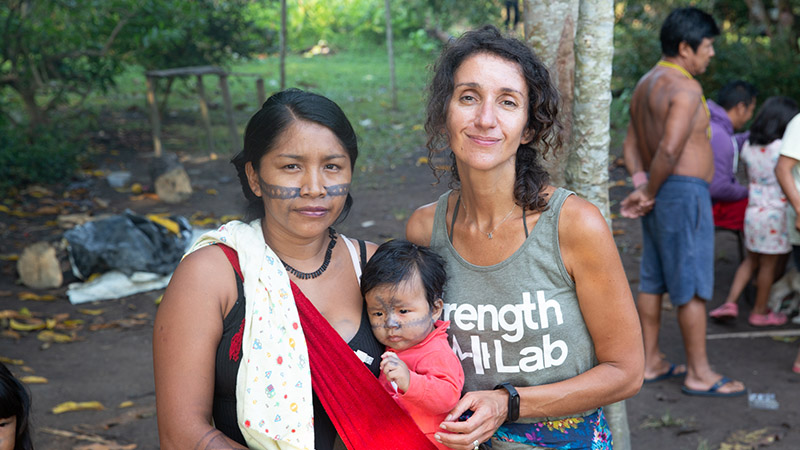
Leticia with Aldira from the indigenous Munduruku tribe
Although Leticia was launching her stunning new photobook called Dear Ana in honor of her deceased Portuguese grandmother and finishing work on an exhibition for the VIA Arts Prize (opening soon in London), the opportunity to meet more Brazilian activists – especially women – and connect them to an important filmmaker could not be missed.
Born and raised in São Paulo, Leticia has always been passionate about the rainforest of her native land. She has watched the struggles of the Munduruku tribe, fighting illegal gold miners, loggers and land grabbers seeking to raise soy for feeding cattle. Beyond destroying their habitat and the planet’s “lungs”, these villains also threaten the indigenous people, burning their villages and attacking them.
According to Lamb’s article, their biggest enemy is actually the Brazilian government – whose president Jair Bolsonaro was conspicuously absent from the COP this year and under whose rule deforestation is at a 13 – year high.
Although these indigenous people are the true guardians of the forest, they live under relentless intimidation. Even at the COP they were not safe. Leticia witnessed members of the Brazilian delegation harassing two of the indigenous female speakers and accusing them of lying. Two days after she returned from Glasgow, hostile forces broke into a female Munduruku tribe leader’s home, vandalising it and stealing her camera equipment.
As a way to garner support during the lockdown while stuck in Aljezur, Leticia and her children created a collage series with images from the Amazon. Entitled ‘And Now My Children Know’, the collaboration was shortlisted for the Global Peace Photo Award and depicts graphic, artistic pictures of indigenous people amongst bloody mirrors and decapitated trees. “What we all need to realize is that their plight is also our own,” says Leticia. “Our best hope is to educate our children.”
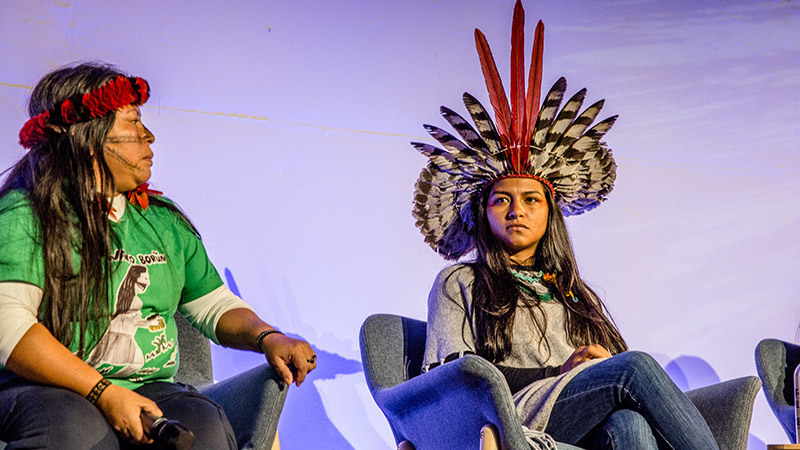
Photo © Leticia Valverdes
This point was also emphasised at a small COP panel by two strong indigenous women who have dedicated their lives to the struggle, Alessandra Korap Munduruku and Juma Xipaia. The pair described their similar challenges in different parts of Brazil. They urged the attendees to get involved and help them wage this battle against corrupt industries and greedy governments. They explained what is actually happening in their small villages and described the devastation they see as more and more of their homeland is destroyed, polluted, burned and seized. Likening themselves to warriors waging war, they concluded with an inconvenient truth: if their children become homeless, the rest of the world’s children will soon follow suit.
Aside from the actual invaders of their land and corrupt policymakers who do not enforce the laws to protect the land, the indigenous women have the added challenge of chauvinism and traditional chiefs who believe women should not speak out or hold leadership positions. Despite the hardships, more indigenous people than ever before attended the COP and the majority of them were women.
For Leticia, who moved to Portugal from the UK after discovering her own roots in the small northern village of Mundão, it is these brave women who are at the forefront of the hope for a better future. It is they who have the power to forge the necessary connections, to share their stories and to educate the children.
In fact, the famed celebrity and environmentalist Leonardo DiCaprio was moved to tears three times during a private meeting with Chief Juma Xipaia. Bombarded with death threats, she cannot live with her children for fear that they will be killed. Militants recently tried to poison her and she is constantly harassed – even at the COP – yet she does not give up.
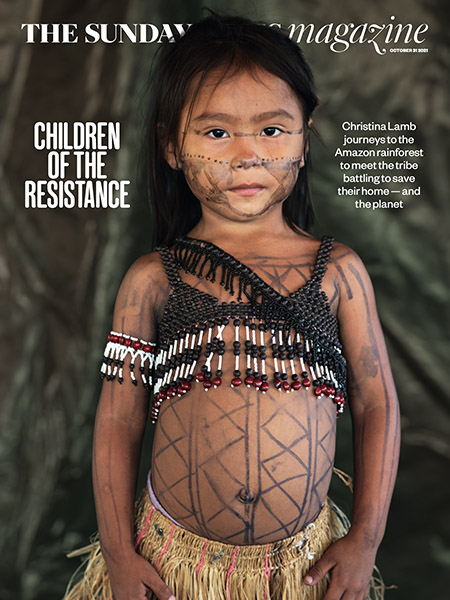
Sunday Times cover by Leticia
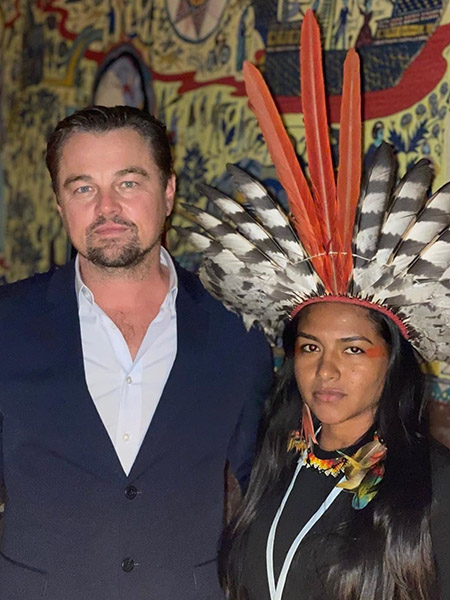
Photo © Instagram @leonardodicaprio
According to Leticia, the Instagram post showing Juma with DiCaprio was especially moving. As documentary filmmaker Richard Ladkani was helping to formulate the post over dinner, he got a phone call from DiCaprio confirming the funding for his next documentary. This project will be about the Amazon and it was Ladkani who connected DiCaprio to Juma. These bonds between people who see each other and realise we are in this together have the power to shift the balance.
In another touching encounter, Leticia describes showing her book on the Amazon to Juma and explaining that she created it with her children. “When she saw it, she started to cry,” says Leticia. “I only had two copies and I asked her if she would like one and she told me, “if I must leave all my luggage behind just to carry this one book back with me, I will do it.”
These, insists Leticia, are the moments that matter. These are the moments when you can see hope. Clearly, the world has a long way to go to avoid imminent disaster. But the reviews are mixed. The indigenous people are telling their stories on social media. Their voices are finally being heard, not just by Brazilians but by the entire world. They are fighting mass corruption and winning small battles. They are garnering support with a grassroots movement, and they are reminding the world that there is no difference between ‘them’ and ‘us’ when it comes to the planet.
“The battle is on all fronts, even here in Aljezur,” says Leticia, in reference to Portugal’s use of a cancer-causing herbicide Glyphosate in the Aljezur river. “But artists are often pigeonholed, and I don’t want to separate the personal from the universal. I am as interested in the internal landscape of humans as I am about the external landscape of the planet.”
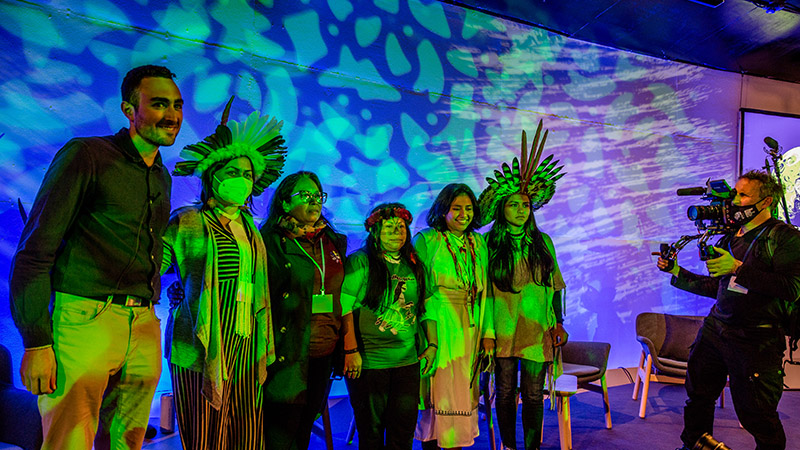
Photo © Leticia Valverdes
For Leticia, the art of photography is an invitation to participate in stories beyond our own and a powerful medium of connection. It is a window into the world of other humans – so similar to us and yet living such different realities. If we can begin to see each other as united despite our diverse experiences, we will all have a better chance at survival. Once we realise that the indigenous people represent the welfare of us all, perhaps their stories will resonate more deeply within us. Perhaps we will begin to ask ourselves what we as individuals can actually do to help. This, explains Leticia, is where the real “last, best hope” resides.
Leticia’s new photo book ‘Dear Ana’ can be bought at letitiavalverdes.com
